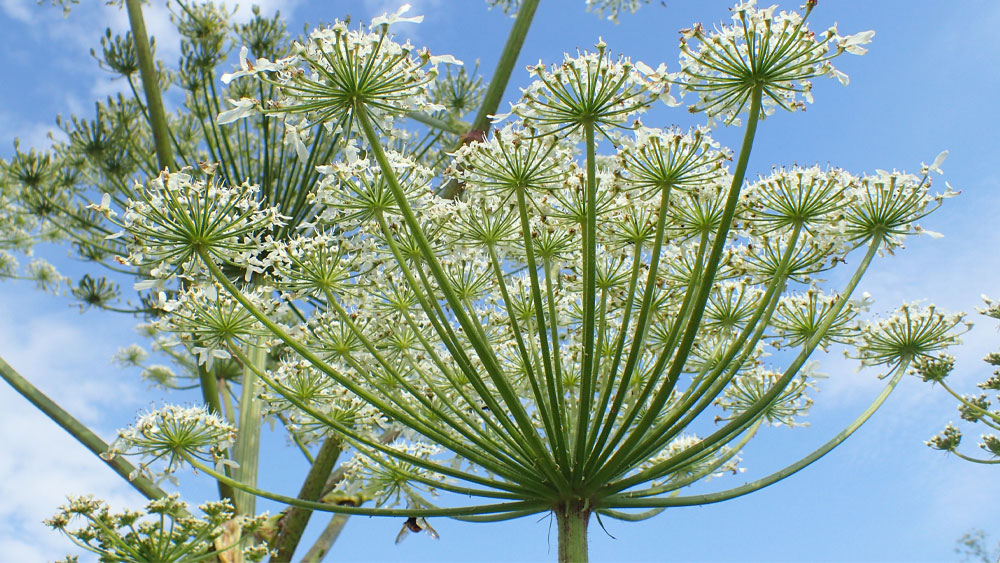Like all sciences, creation science has unanswered questions. This is why we are called the Institute for Creation Research—not the Institute for Creation Answers. Specifically, there are still some questions regarding the origin of predation, pathogens, poisonous plants, and parasites.
In regard to predation, a creation biologist stated,
Although the origin of predation is poorly understood, it is incorrect to attribute to young-earth creation the assertion that predatory animals quickly and recently evolved the physical features necessary for predation. It is a common fallacy that carnivores evolved from a change in form and function. No physical evolution was required to change herbivores to predators—it was merely a change in behavior.1
However, headway continues to be made as biblical and scientific answers to these questions are developed. For example, it wasn’t long ago that many thought all viruses were bad, but Dr. Jerry Bergman wrote,
Although viruses were discovered only at the turn of this century, research has now found a substantial amount of evidence that they serve several major roles in ecology and are actually essential for life. Without viruses, the genetic revolution we are now experiencing would be impossible. They also serve numerous beneficial functions that we are just beginning to research and understand.2
The same could be said regarding poisons. Botulism is a rare but devastating disease caused by bacterium Clostridium botulinum. Infection occurs by ingesting contaminated food or C. botulinum infecting a wound. As terrible as this is, highly diluted botulinum toxin can be used to eliminate wrinkles (for a time) and ease certain types of pain, such as that which is experienced in chronic migraines.
Recently, botanists at the Skolkovo Institute of Science and Technology have made an interesting discovery regarding a toxic plant called Sosnowsky’s hogweed (Heracleum sosnowskyi).
For the first time ever, scientists have studied the genome [the total genetic material within a cell] of Sosnowsky’s hogweed, a poisonous invasive plant whose juice causes skin burns. They found that its genome has nearly twice as many genes as most other plants.3
The article goes on to say that this plant actually has practical applications: “The research findings open the door to practical applications in medicine and pharmacology, thanks to hogweed’s unique bioactive molecules, which can be used to create new drugs.”3
This discovery of bioactive molecules in the hogweed is an indication that there might have been an alternative function for it prior to the Fall. Creation scientists have suggested for decades that poisons, pathogenic bacteria, and parasites of today were in fact beneficial or at least neutral in the pre-fallen world thousands of years ago. Indeed, as mentioned, even the hogweed contains “compounds with high pharmaceutical value.”4
Schelkunov et al. stated recently in their paper on H. sosnowskyi that “the ability of H. sosnowskyi to produce linear furanocoumarins (FCs), photosensitizing compounds, makes it very dangerous. At the same time, linear FCs are compounds with high pharmaceutical value used in skin disease therapies.”4
It is possible that the Curse caused the genome of many creatures to degrade (genetic entropy), be altered, or have sections partially deleted. Such genetic changes or loss could produce, for example, the plant toxicity we see in Sosnowsky’s hogweed.
There are many other examples.5,6 Tetrodotoxin is a powerful neurotoxin (sodium channel blocker) found in a variety of organisms throughout the world, including blue-ringed octopuses, pufferfish, and the bacterium Vibrio.7 “In low doses, tetrodotoxin is shown in clinical trials to be a replacement for opioids for relieving cancer related pain.”8
To conclude, Christians understand that God’s creation was very good in the beginning. Sadly, it was tainted by the sin of disobedience and justly cursed.9 This is reflected in the corruption or partial loss of genetic information, possibly resulting in poisons, parasites, and pathogens. Creation scientists undergo scientific research and investigation to answer these questions from a biblical perspective.
References
- Criswell, D. 2009. Predation Did Not Come from Evolution. Acts & Facts. 38 (3): 9.
- Bergman, J. 1999. Did God make pathogenic viruses? Journal of Creation 13 (1): 115–125.
- Poisonous invasive plant exhibits twice as many genes as expected. Skolkovo Institute of Science and Technology. Posted on phys.org November 24, 2023.
- Schelkunov, M. et al. The genome of the toxic invasive species Heracleum sosnowskyi carries an increased number of genes despite absence of recent whole-genome duplications. Onlinelibrary. Posted on onlinelibrary.wiley October 17, 2023.
- Tomkins, J. Unlocking the Origins of Snake Venom. Creation Science Update. Posted on ICR.org December 15, 2014.
- Thomas, B. Did God Make the Ebola Virus? Creation Science Update. Posted on ICR.org October 29, 2014.
- Thomas, B. 2022. The Bobtail Squid’s Living Cloaking Device. Acts & Facts. 51 (4): 16–17.
- Smith, N. Puffer Fish Toxin to Replace Opioids? Naturopathic Doctor News & Review. Posted on ndnr.com March 17, 2020.
- Genesis 3.
Stage image: Heracleum sosnowskyi in Santocko near Gorzów Wlkp., NW Poland
Stage image credit: Copyright © Krzysztof Ziarnek, Kenraiz, 2015. Used in accordance with federal copyright (fair use doctrine) law. Usage by ICR does not imply endorsement of copyright holder.
* Dr. Sherwin is news writer at the Institute for Creation Research. He earned an M.A. in zoology from the University of Northern Colorado and received an Honorary Doctorate of Science from Pensacola Christian College.
























